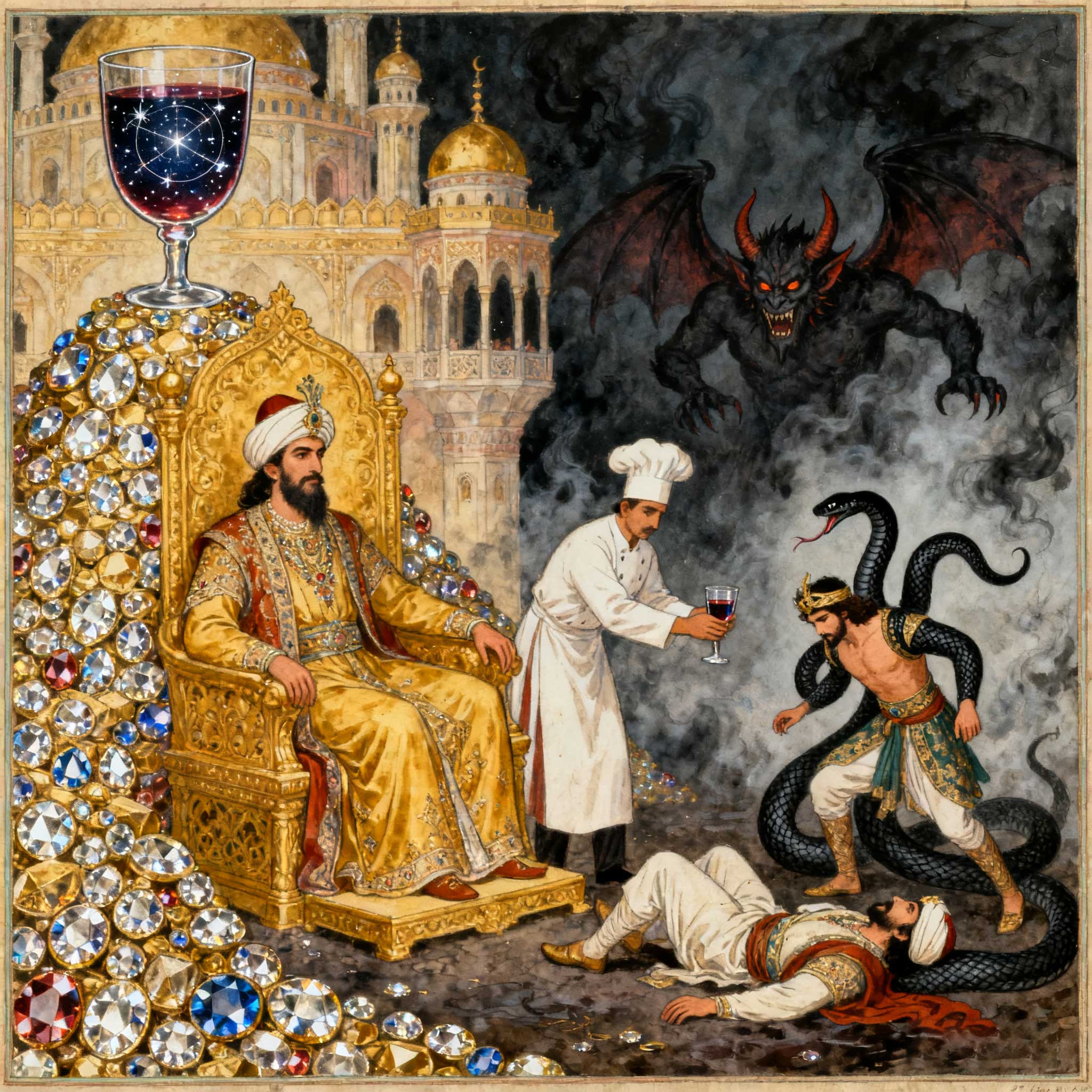+86-13516938893
Menu
global purchase
When Jamshid, humanity’s first king, became intoxicated by power, his palace was adorned with gold and gems—even his wine cups could reflect the movement of stars. But arrogance made him forget the divine. Seizing the opportunity, the demon Ahriman sent a venomous snake disguised as a chef, who tricked Jamshid into drinking poisoned wine. As the king collapsed, the snake transformed into the Arab prince Zahhak—and from his shoulders suddenly sprouted two black snakes that feasted on human brains. Each night, the snakes demanded the brains of two young men to ease their agonizing hunger.
During Zahhak’s thousand-year reign over Persia, the land was shrouded in dark mist. Caravans vanished in the deserts, and cities crumbled into ruins. One day, while the blacksmith Kaveh forged chains by his furnace, he noticed his leather apron glowing in the firelight—until it transformed into a blood-red banner. Raising it high, he shouted: “Who will follow me to overthrow the tyrant?” In an instant, craftsmen, farmers, and warriors from across Persia answered his call, and Kaveh’s Banner became a symbol of rebellion.
Meanwhile, Fereydun, a descendant of Jamshid, was in exile in the East. Chosen by the divine as a hero, he had spent his youth learning survival skills amid the towering mountains of “Qin” and “Ma Qin” (present-day western China). When Kaveh’s messenger crossed the desert to find him, Fereydun was tying up a giant elephant, preparing to cross the frozen Arctic Circle and return to his homeland. The sound of his warhorse “Iron Hoof” shattering the ice woke the slumbering divine Simurgh—a mythical bird that had witnessed the destruction of the world three times. From its wings, the Simurgh shook loose seeds of healing, which fell and clung to Fereydun’s armor.
On the eve of the final battle, Fereydun dreamed he had turned into a giant python coiled around Mount Damavand. His three sons—Tus (representing strength), Salm (wisdom), and Iraj (compassion)—used chains forged from diamond to bind Zahhak to the mountain’s peak. At dawn the next day, Fereydun charged into Zahhak’s palace, wielding a bull-headed mace—only to find the throne empty. The tyrant had already transformed into a snake and hidden underground.
“In the name of light, I command you to reveal yourself!” Fereydun’s shout shook heaven and earth. Zahhak burst from the ground beneath the throne, his forked tongue spitting venom that corroded the stone tiles. Fereydun swung his mace, which whipped up a storm—but Zahhak’s poisonous fangs clamped down on the weapon’s head. In that critical moment, the angel Surush descended, searing the snake-king’s eyes with holy fire: “His end is not yet come, but you may imprison him for three thousand years.”
Fereydun bound Zahhak with iron chains and locked him in a crevice of Mount Damavand. The tyrant’s wails turned into mountain winds, which still echo across the Persian Plateau to this day. Kaveh’s Banner was raised high above Fereydun’s palace, becoming an eternal symbol of freedom for Persia. As for the Simurgh, it took roost in the sacred Gokarn tree atop the mountain, its wings shielding Fereydun’s descendants—who would continue to fight against the forces of darkness in the years to come.
Even now, when Persians light bonfires during Nowruz (Persia’s New Year festival), they swear they can see Fereydun’s silhouette in the flames. And deep within the snow-covered crevices of Mount Damavand, the clink of Zahhak’s chains can still be faintly heard—a reminder that while light will always triumph over darkness, freedom demands eternal vigilance.